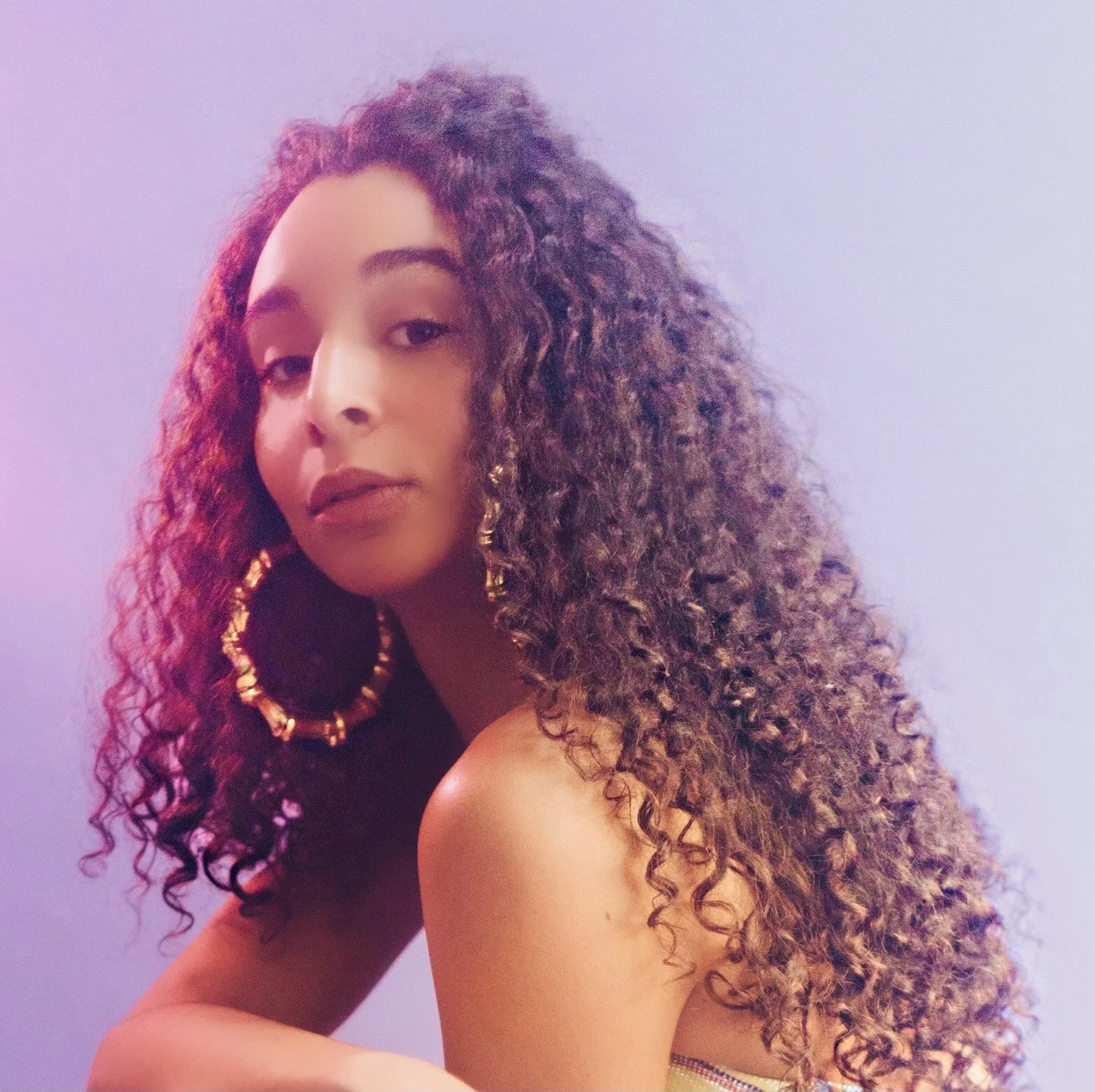Art Convo with Jaishri Abichandani: The Divine Feminine as Artist, Curator and Disruptor
Portrait (s) by Josh Steinbauer.
A robust and expansive conversation with New York-based feminist curator and artist extraordinaire Jaishri Abichandani (she/her), who through Hindu mythology unpacks ideas on inclusive feminism, power, sex, politics, social justice and female divinity. Abichandani reveals the sacred and ecstatic layers of her art-making practice. I dare you to dive all the way in. Also check out her upcoming open studio in Bushwick, Brooklyn on July 17.
How are you feeling at this moment?
That feels like a loaded question these days. I feel caught in a universal and personal moment of deep loss and transformation. While we are having a reprieve from a fascist leader and the virus, India remains in the throes of devastation. It’s hard to carry on when half of your family is safe and the other in peril. On a personal level, I am recovering from some health issues that have given me clarity and determination. I feel like I am emerging from a chrysalis, precarious but renewed.
What are some self-care rituals that keep you whole?
Reiki, guided medications, self-medicating with weed and gardening - turning my tiny concrete backyard into a verdant little jungle where I spend hours with my cat, just watching the plants grow. I have potted Japanese maples, willows, jasmine, lavender, herbs and flowers galore interspersed with my sculptures and a Buddha.
“I feel like I am emerging from a chrysalis, precarious but renewed.”
Holy Family, 2019. Courtesy of the artist.
I absolutely love this quote from you, "an insatiable need to make objects of disruptive beauty with my hands..." Can you expand further on this idea, specifically with your gorgeous electric blue creature/womxn sculptures?
Most of the sculptures I make, mash up autobiography with mythology, social justice and politics. The pair of blue-bodied sculptures are perfect examples of this, titled Kamala’s Inheritance, they are loaded with symbolism. The smaller squatting figure with no arms and the drooping head of a lotus combines two Hindu goddesses - Kali and Lajja Gauri. The first is always depicted with a necklace of skulls while the latter with the head of a lotus. The current fascist Hindu fundamentalist government of India uses the lotus as their party symbol, appropriating a flower that has been used for centuries in religion, art and architecture by Buddhist, Hindu and Muslims alike in South Asia. The name “Lajja Gauri” means “ the shameful one/the modest one” in sharp contrast to her traditional renderings in birthing position, with vulva fully exposed. Kali is the slayer of demons and evil - the skulls are deployed here to talk about the violence enacted by the government on minorities in the name of Hinduism. The color blue is used within Hinduism to indicate divinity. I turn this divine blue the American Flag in the larger figure with the head of an eagle, an upturned left wing and bleeding amputated right wing as a direct reference to the crippling of American democracy at the hands of the Republicans. The body of the eagle-headed woman is studded with stars (no stripes) and pearls for Kamala Harris’ fondness for the precious material. The dimensions of this figure are based off my own body, which I measured for scale as I built the sculpture. The two bodies together reflect on the Brahmanical privileges that allowed her mother to escape India in the first place, and Cop Kamala’s own decisions to occupy a centrist, carceral, capitalist position in her politics. Put together, the two figures are what I call Kamala’s Inheritance.
Now a lot of this information is completely opaque to most people, so the sculptures have to work on a visceral, visual and emotional level for those who can’t decode its narratives. That’s where the idea of beauty is integral to be able to seduce the audience. Which of course leads us to the question of who is the audience for my work - and to me it’s other BIPOC, all of whom come from rich aesthetic traditions that are outside of the pristine white supremacist patriarchal capitalist spaces of galleries and museums. Most of my sculptures have an iridescent glow, with light bouncing off the surfaces of sculpted bodies in a direct reference to the opulence of sacred spaces. I think often of Kerry James Marshall and the love that he imbued in his work - my own combines fierce feminist critiques grounded in social justice with love of our people, for nature, for this planet. I am never happier than when making works that speak to the simultaneous ecstasy and terror of being alive.
“Most of the sculptures I make, mash up autobiography with mythology, social justice and politics.”
Kamala’s Inheritance, 2021. Courtesy of the artist.
I saw the trilogy of exhibits you curated at Ford Foundation in 2019; Perilous Bodies, Radical Love, and Utopian Imagination. And these shows were MAJOR! What were some connecting threads in all three exhibits? Specifically, how you centered BIPOC and QTBIPOC artists.
I designed the trilogy for the Ford Foundation Gallery based on its mission - the overarching theme of it was based on a quote by Naomi Klein. I laid out the trilogy to first examine the issues we face as we struggle for human rights and social justice the world over in the first exhibition Perilous Bodies. The second exhibition, Radical Love, proposed love of oneself, one’s community and the stewardship of the planet as a solution to this violence that threatens our very existence. Finally, in Utopian Imagination, the works of BIPOC artists gave us glimpses of what the future may hold for us.
It seemed important to lay out the groundwork of what we face in the first exhibition Perilous Bodies. We looked at existential and environmental peril through the works of Otobong Nkanga and Hannah Bronte, we looked at war, refugees, violence at the borders of nations through Barthélémy Toguo’s boat, Mahwish Chishty’s drones, Tiffany Chung’s images of Syria, Mohamad Hafez’s reconstructions of bombed-out homes, Margarita Cabrera’s cactus made of decommissioned Border Control uniforms, racism and police brutality through Dread Scott’s installation, caste-based violence through Thenmozhi Soundararajan’s work, and gender-based violence in Teresa Serrano’s video of a woman-shaped piñata being destroyed. Nona Faustine’s self-portrait took on homelessness, poverty and gentrification, while David Antonio Cruz created a painting of Black trans women who were being murdered. All the works turned into a chorus of the intersectional violence that we experience in our lives as BIWOC.
Radical Love set out to create a sacred space for all of us, BIPOC & QTBIPOC, who are left out of the narratives of power structures and decision making. It centered queer Black and Brown bodies, with many artists self-mythologizing and turning to nature for a lush opulent aesthetic. Utopian Imagination brought together works based in science fiction that had been created by BIPOC artists over the last twenty years including Yinka Shonibare’s first astronaut sculpture (Cloud 9, 1999-2000), early works by Mariko Mori and Lee Bul, with contemporary works by Saks Afridi, Cannupa Hanska Luger, Zak Ové and Morehshin Allahyari. We were lucky enough to have Firelei Báez create a brand new installation/portal for us that led into the gallery space. Visually, there was so much resonance between Yinka’s astronaut, Zak’s space deity and Cannupa’s futuristic shamans. The links between Zak’s spaceship and the creation of Syzygy by Lola Flash for the exhibition were pure serendipity, as were the stars, moons and planets twinkling in photographs by farixyo jamaac, Mikael Owunna and Juliana Huxtable. I think the most popular and interactive works were by Beatriz Cortez, made in collaboration with various indigenous and migrant communities.
There was never any question in my mind that the shows would be defined almost entirely by BIPOC artists - given the abysmal representation we have, how could it be otherwise? White artists have plenty of opportunities and I’m not here to give them any more - my modus operandi has always been to constantly intervene and destabilize white supremacist institutions when the opportunity arises by flooding them with the brilliance of our work.
Installation view of Utopian Imagination, in the Ford Foundation Gallery. Photo by Sebastian Bach.
What's next in 2021?
I have a group show opening June 12 at Welancora Gallery curated by Nico Wheadon. I am also prepping for my mid-career survey at the Craft Contemporary Museum in Los Angeles curated by Anuradha Vikram which opens at the end of January next year. I am thrilled to be showing some of the newer sculptures and working hard on getting it all ready in time.
“I am never happier than when making works that speak to the simultaneous ecstasy and terror of being alive.”
Myself, Daughter of Indira, Granddaughter of Ganga, 2021. Photo by Karen Dias.
Myself, Daughter of Indira, Granddaughter of Ganga, 2021. Photo by Karen Dias.











